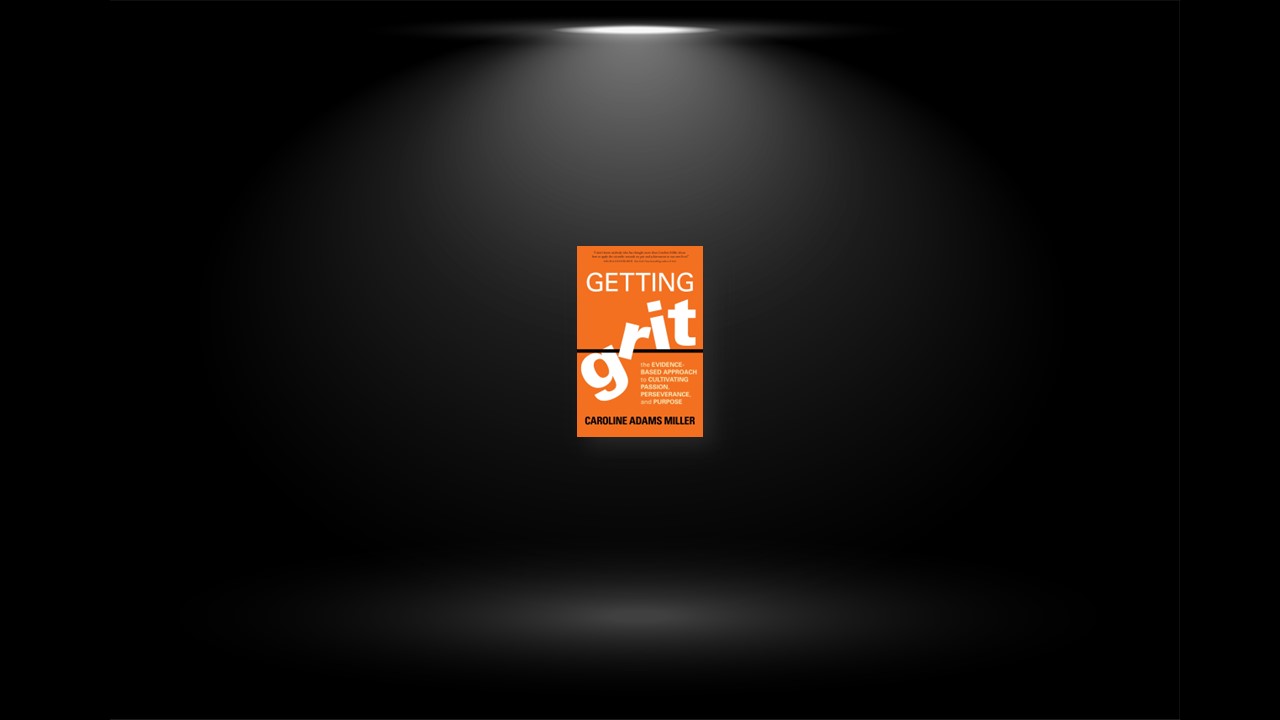Building Passion to Fuel Purpose
The more you examine lives of authentic grit, the more you see that passion is part and parcel of understanding a person’s purpose. Take Wayne Pacelle, a lobbyist in Washington, DC, whose passion has always been for animals. This passion led him to his purpose: to prevent humans from abusing animals. A Yale University graduate, he adopted a vegan lifestyle thirty years ago as a young man and has worked tirelessly to help the plight of animals wherever they are exploited. He played an important role in negotiating with SeaWorld to phase out the breeding of killer whales for shows, in getting stores like PetSmart and Petco to stop selling puppies from puppy mills, in stopping Ringling Bros. and Barnum & Bailey Circus from continuing their elephant acts, and in halting the use of chimpanzees in medical tests at the National Institutes of Health.
Without authentic grit, though, and an unwillingness to give up on some of his biggest goals, Pacelle wouldn’t have achieved one of his biggest coups. After years of not making headway in reaching anyone at McDonald’s, which buys one in every seven pigs in the United States, Pacelle got a call one day from the billionaire Carl Icahn, asking what he could do to be helpful. Pacelle described the inhumane treatment of pigs at commercial breeding farms, where they are confined for years in crates so small they can’t walk or turn around, becoming so agitated that they chew the bars until their teeth crack and bang their snouts and foreheads to a bloody pulp. Icahn swung into action and “effortlessly” reached the CEO of McDonald’s and other companies, opening the door for Pacelle to come in and make his case. McDonald’s ultimately agreed to give up buying pigs from farms that used crates, which caused sixty other food suppliers like Burger King, Wendy’s, and Carl’s Jr. to do the same. That laid the groundwork for Walmart, the world’s largest food seller, to adopt new guidelines for its suppliers, directing them to adopt humane policies, too.
Happiness
There are many other ways that emotional flourishing can improve your ability to be gritty, and one of them is making you better able to deal with physical pain. To break down prisoners and make torture more effective, captors exploit the importance of close relationships by telling prisoners that no one cares about them or is coming to save them. The subsequent feeling of abandonment amplifies the pain of physical torture. Positive emotions help people withstand torture. For our purposes, the more well-being you can create, the more easily you’ll be able to cope with the physical and emotional challenges that occur when you need to exhibit grit.
New research has found that anxiety and depression can fuel procrastination because it’s easier to give up when unhappiness rules our thinking. One of the best ways to deal with this is to “time travel” and imagine an important goal has been reached—instead of focusing only on the work in front of you. The research finds that the positive emotions generated by imagining a completed goal can lift a person’s mood and allow them to get started on, or stick with, hard work.
Goal Setting
There is evidence that writing down your goals enhances commitment. This can take the form of publicly posting your goals on a website or in a blog, creating “behavioral contracts,” and journaling. The exercise “Best Possible Future Self,” which involves writing down where you envision yourself in ten years, has been found to prompt goal-directed thinking and to also clarify goals in conflict, while raising optimism and evoking persistence.
In 2015, National Public Radio aired a story called “The Writing Assignment That Changes Lives” that covered an online goal-setting and journaling program that is having an impressive impact on university students when it comes to their retention in school and their grade-point averages. Jordan Peterson, who teaches in the department of psychology at the University of Toronto, launched a curriculum called Maps of Meaning, which walks students through questions that help them identify their motivation, plans for the future and specific goals, and the strategies they will use to help them overcome any setbacks. He divides the expressive writing combined with the goal-setting into two sections: “past authoring” and “future authoring.”
One study at McGill University in Montreal found that at-risk students who took the Maps of Meaning course were less likely to drop out and more likely to improve academic performance. Another study on what happened to students who took the course in their freshman year found that the writing exercises erased nearly all the differences between gender and race. The course is now offered at the Rotterdam School of Management in the Netherlands as well, and the results are especially powerful there because of the proliferation of immigrants who might be vulnerable to “stereotype threat.” Peterson feels a goal-setting intervention that keeps such students in school is life changing: “You don’t have to be a genius to get through school. You don’t even have to be that interested. But zeroes are deadly.”
Self-Regulation
In 2005, Edward Hallowell wrote an article for Harvard Business Review entitled “Overloaded Circuits: Why Smart People Underperform.” As a psychiatrist who had helped many people diagnose and deal with attention deficit hyperactivity disorder (ADHD) and its cousin, attention deficit disorder (ADD), he was noticing the epidemic of a new, related disorder that he calls Attention Deficit Trait (ADT). Unlike ADD and ADHD, which are rooted in genetics and often come with creative, insightful gifts that can be masked by the inability to focus at times, ADT doesn’t come with any gifts and is the result of living and working in a hyperkinetic world, where there are so many data points to keep track of that our brains suffer from overload and begin to shut down.
The inability to self-regulate because of the incessant use of technology, the urgent need for speed, and the inability of many to step away and recalibrate, are part of what I believe is contributing to the lack of grit in the world today. Hallowell believes that part of what causes ADT to flourish is the survival mechanism of fear, which springs into action whenever we feel startled or threatened. He writes, “In survival mode, the manager is robbed of his flexibility, his sense of humor, his ability to deal with the unknown. He desperately wants to kill the metaphorical tiger.”
Hallowell is careful to make a distinction between the conditions he has studied. ADD and ADHD can be confirmed by brain scans and the selective use of stimulants. ADT, which is neither of the two, will only get better by changing a person’s external environment and responses to stress. His advice to defeat ADT and learn how to cultivate self-regulation—so that you can work toward the accomplishment of important goals without nonstop distraction and disruption—is similar to the wisdom on creating optimal conditions for flourishing: promote positive emotions, remain physically connected with people you like and respect, take care of your brain with the right rest and nutrition, exercise your body, declutter your day and your environment to avoid distraction, and know how to self-soothe when you get anxious so that you can return to a state of calm.
Risk-Taking
When we decide to take a risk, we are taking a stand about who we want to be. Ruth Chang, a philosophy professor at Rutgers University, said in a TED talk that not making these types of decisions leaves us as “drifters” who never really choose where we want to put our agency. The opportunity to take a risk, though, is a “godsend,” she says. “You might say that we become the authors of our lives.”
One powerful way to help you take a risk in the right direction is to learn about the failures of other people who also succeed. Sara Blakely, the billionaire founder of Spanx, uses this approach by celebrating the “Oops!” moments her employees have. She also freely shares her own personal and professional mistakes so that her employees learn that people overcome missteps and emerge intact. She credits her open-minded approach to failure to her father, who regularly asked his children at dinner to share their daily failures and responded to them with a high five for their taking chances. He also taught Sara to extract the nuggets of gold from every setback, which left her with the conviction that there are no bad experiences in life, but rather that everything is a teachable moment making you smarter and better prepared for whatever happens. Like many other gritty people, Sara believes that the only failures in life are the failures to take action.
Perseverance
Gritty people work in a way that evokes the Zeigarnik effect, which means that they always have unfinished goals pulling them forward. This theory comes from Bluma Zeigarnik, a researcher who noticed that waiters in a restaurant who were still trying to complete a diner’s order could recall the details of that order, while waiters who had successfully finished their work with a table couldn’t recall the details of the order they had just delivered. Zeigarnik refined these initial observations through various tests until she finally concluded that those working toward a goal who code it as completed in their minds don’t then have a restlessness that drives them to continue working on the goal. People who don’t quit at goals, however, always have something whirring in the background of their minds, whether they’re trying to figure out how to solve a problem, find the right resources, or search for new ways to succeed.
Why does the Zeigarnik principle work particularly well for people who are passionate about their long-term goals? First, when you have a powerful “why” behind what you are doing and you are intrinsically motivated to do this difficult thing because it is important to you, and not necessarily to anyone else, you will instinctively be pulled back to what is unfinished. The other reason it works so well is because when people expect to do well with their goals—when they have high hope and robust self-efficacy—they continue to come back to create completion. So a sure test of whether or not you are truly motivated to achieve a goal is if you respond to unfinished business with passion, curiosity, and zest. If not, you might not be pursuing a gritty goal that is right for you.


